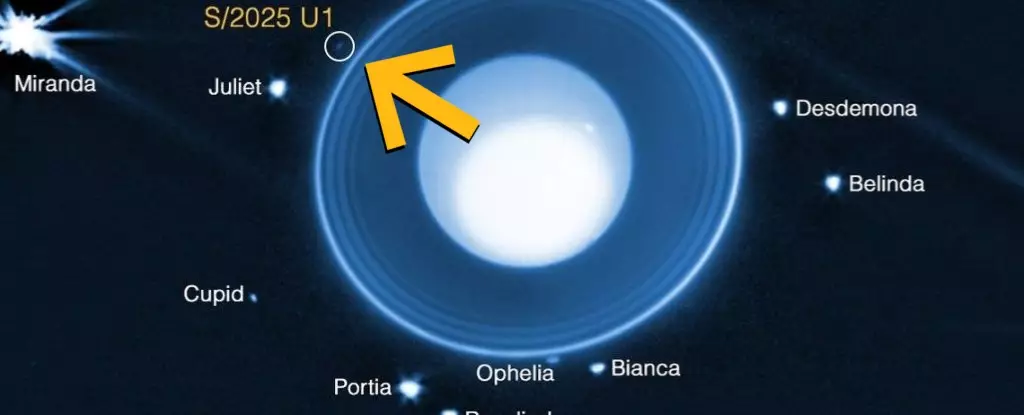The recent discovery of a tiny moon orbiting Uranus serves as a potent reminder of how much remains undiscovered in our solar system. With the identification of S/2025 U1, the tally of Uranian moons has risen to 29, an increase that underscores the complex and dynamic nature of this distant planet’s neighborhood. This finding indicates that despite decades of exploration, Uranus still harbors secrets waiting to be uncovered. The moon itself, measuring perhaps only 10 kilometers across, exemplifies how small objects in our solar system can have outsized significance, providing clues to planetary formation and system evolution.
What makes this discovery particularly compelling is the context in which it was made. The James Webb Space Telescope (JWST), a marvel of modern astronomy, captured images of this elusive object during a dedicated observational campaign in early 2025. Its near-infrared NIRCam instrument was responsible for unveiling this tiny, faint moon—an object that previous missions, including Voyager 2’s historic flyby in 1986, could not detect. This highlights the leaps in technological capability that now allow us to peer deeper into the cosmos and unravel mysteries that once lay beyond our reach.
Challenging Our Conventional Understanding of Planetary Systems
Uranus’s inner moon system stands apart from those of any other planet in our solar system, largely because of its numerous small moons nestled within a relatively tight orbital zone. These moons, including the newly found S/2025 U1, form a tangled web of gravitational interactions and orbital intricacies. Their proximity and apparent chaotic historical interactions blur the line between discrete moons and the planet’s faint rings, suggesting perhaps a common origin or ongoing processes that keep these systems in a state of flux.
The fact that S/2025 U1 resides in an almost perfectly circular orbit hints at a possible in-situ formation—something that sparks intriguing questions about the history of Uranus’s inner system. Did these moons coalesce from debris, or are they remnants of larger bodies shattered in past collisions? The small size and faintness of this moon imply that there could be many more tiny objects awaiting discovery, each potentially offering a piece of the puzzle in understanding how such complex satellite systems evolve. The discovery compels us to rethink assumptions about planetary system stability and growth.
Reflections on Humanity’s Ongoing Voyage of Discovery
Every new celestial body we uncover extends our narrative of cosmic exploration. The ancient missions like Voyager 2 laid the groundwork, but it’s the advanced observational tools like JWST that now propel us into a new era of planetary science. The ability to detect objects that are mere kilometers across, orbiting a planet hundreds of millions of kilometers away, demonstrates the rapid technological progress and the inexhaustible human curiosity driving these expeditions.
This latest find invigorates the call for renewed interest in the outer planets, especially Uranus, which remains one of the most underexplored worlds in our solar system. The poetic names given to these moons—drawn from William Shakespeare or Alexander Pope— underscore both humanity’s creative spirit and the enduring mystery that these celestial bodies embody. As discoveries accumulate, so do the questions: What stories do these moons tell about the origins of our solar system? How many more small, faint objects lie hidden in Uranus’s shadow, waiting patiently for their moment of discovery?
Ultimately, each detection like S/2025 U1 pushes the boundary of what we understand about planetary systems. It reminds us that the universe still holds secrets that challenge our knowledge, inspire our imagination, and ultimately propel humanity forward in its quest to comprehend the cosmos.

